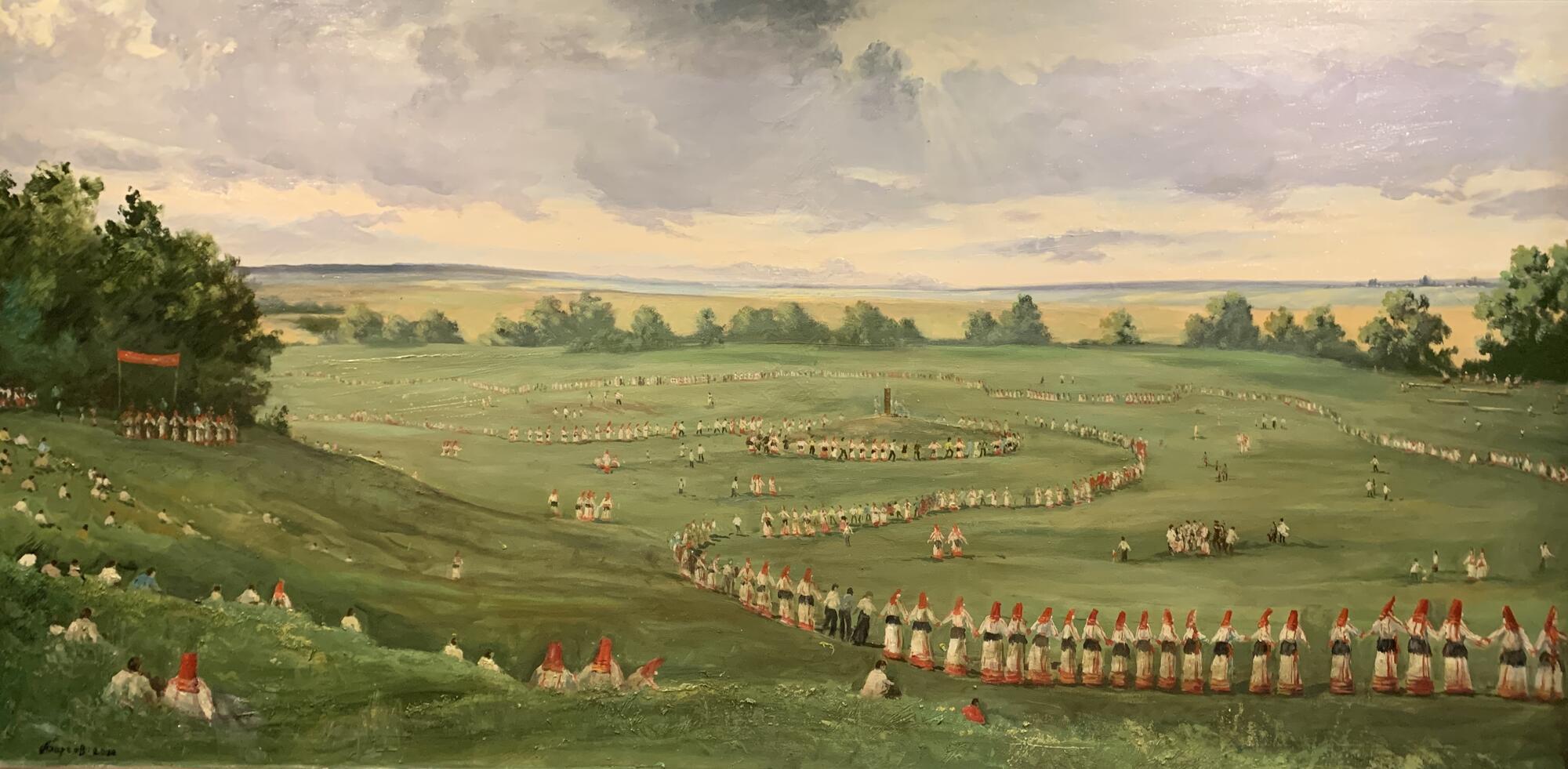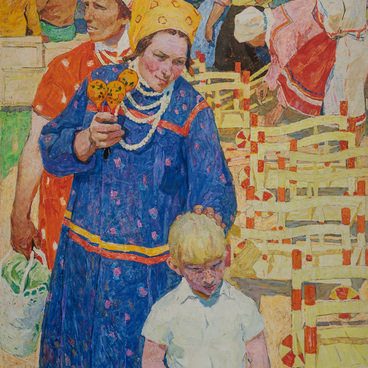People’s Artist of the Republic of Mordovia, Honorary Member of the Russian Academy of Arts, Corresponding Member of the International Academy of Culture and Art, Anatoly Bargov is today one of the few artists who turn to genre painting. The painter actively develops national themes, seeking artistic and philosophical reflection on native culture. He advocates the need to revive, preserve and continue the folk traditions of the Mordovian people.
The national theme is revealed by the artist as a festive perception of existence, characteristic of the folk worldview. His work is distinctly decorative, it carries a surge of energy, expressed in a vigorous manner of painting. His lyrical and epic landscapes are dedicated to praising the beauty of his native Mordovian land, they reveal the author’s interest in the national roots and spiritual sources. The artist’s works are imbued with admiration for the beauty of the world and native culture.
Through the landscape of his native Mordovia the artist connects with the history and culture of his fatherland, contributing to the development of current spiritual issues in contemporary Mordovian fine arts. Through the optimistic images of multi-figured compositions with the pronounced choral, communal element, he shows the true strength of the people in unity, in turning to the traditions of their ancestors, in respecting the ethnic antiquity of national costume, dance, song, custom and their modern existence.
The meadow full of people wearing festive clothes looks like a huge bowl, bordered by clumps of deciduous trees. The traditional Erzya festival Rasken Ozks (Clan Praying), revived in 1999 as a festival of ethnic culture, takes place here. Rasken Ozks is an ancient rite of the Erzya people. The origins of the holiday go back to the distant past. Erzya prayers expressed farmers’ hopes for gods’ help in conquering elemental forces of nature, which were crucial for people’s well-being. During prayers people appealed to Ineshkipaz and their ancestors. In part, these ancient traditions survived today.
In the Republic of Mordovia, Rasken Ozks, along with Aksha Kelu, Velen Ozks, Sabantuy and the Day of Slavic Writing and Culture, is a state national holiday.
The national theme is revealed by the artist as a festive perception of existence, characteristic of the folk worldview. His work is distinctly decorative, it carries a surge of energy, expressed in a vigorous manner of painting. His lyrical and epic landscapes are dedicated to praising the beauty of his native Mordovian land, they reveal the author’s interest in the national roots and spiritual sources. The artist’s works are imbued with admiration for the beauty of the world and native culture.
Through the landscape of his native Mordovia the artist connects with the history and culture of his fatherland, contributing to the development of current spiritual issues in contemporary Mordovian fine arts. Through the optimistic images of multi-figured compositions with the pronounced choral, communal element, he shows the true strength of the people in unity, in turning to the traditions of their ancestors, in respecting the ethnic antiquity of national costume, dance, song, custom and their modern existence.
The meadow full of people wearing festive clothes looks like a huge bowl, bordered by clumps of deciduous trees. The traditional Erzya festival Rasken Ozks (Clan Praying), revived in 1999 as a festival of ethnic culture, takes place here. Rasken Ozks is an ancient rite of the Erzya people. The origins of the holiday go back to the distant past. Erzya prayers expressed farmers’ hopes for gods’ help in conquering elemental forces of nature, which were crucial for people’s well-being. During prayers people appealed to Ineshkipaz and their ancestors. In part, these ancient traditions survived today.
In the Republic of Mordovia, Rasken Ozks, along with Aksha Kelu, Velen Ozks, Sabantuy and the Day of Slavic Writing and Culture, is a state national holiday.


